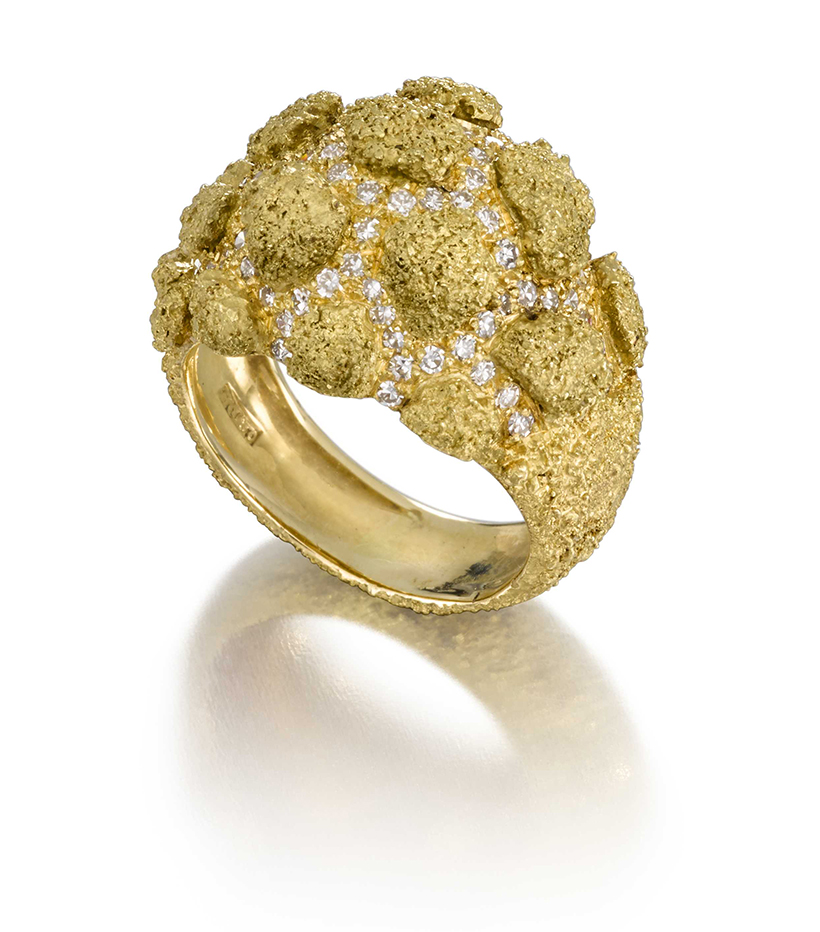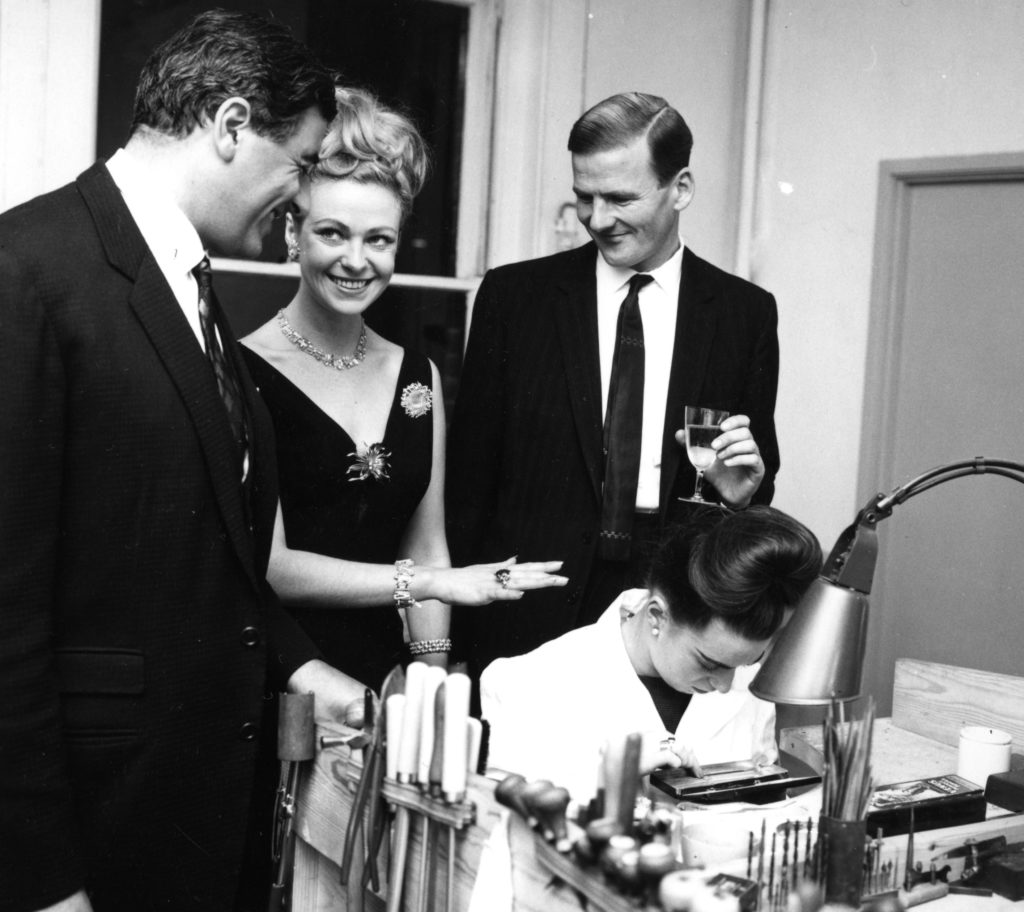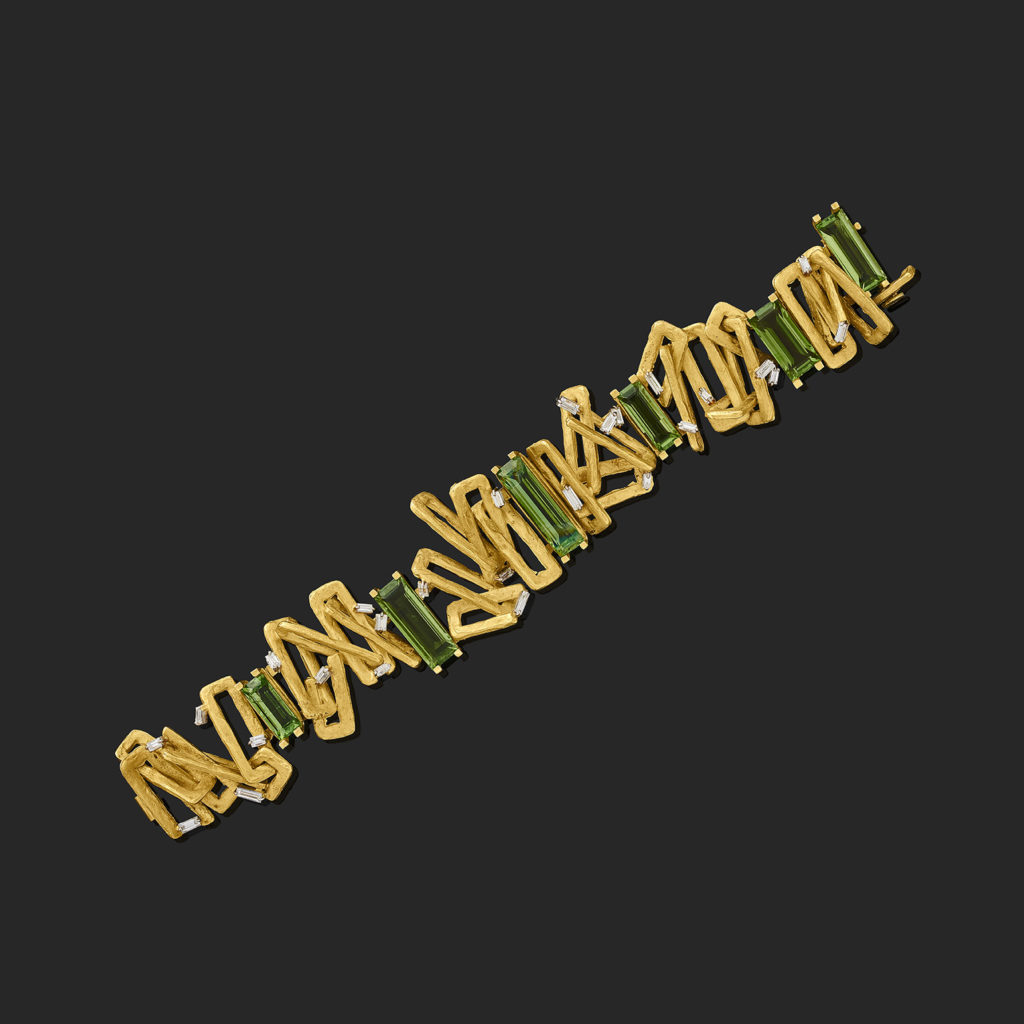Andrew Grima ‘Crocodile’ Ring
A rare gold and diamond ‘Crocodile’ ring from 1965; so-called after its matte texture imitating crocodile leather, with eight-cut diamonds set into the fissures, appears to be one of only three or four of these rings to have been made. Which is hardly surprising given the degree of hand-eye co-ordination and judgement required to make it. The crocodile-skin texture has been built up by sweating gold granules onto the surface—a delicate operation to fuse but not melt the surface. The ring was among the group of jewels by Grima which won the Duke of Edinburgh’s Prize for Elegant Design in 1966. These included a bracelet and two brooches in the Goldsmiths’ Company Collection.

A photograph from the Grima archive shows Grima accepting the Duke of Edinburgh’s Prize for Elegant Design in 1966 from HRH Prince Philip.

© Grima Archives
He was the first jeweller to win the coveted award. The citation mentions the revolution in taste and design which Grima’s jewellery had helped to generate: “Today the value attaching to creative design, as distinct from the intrinsic value of the precious stones and metals, has greatly increased. There is now a real difference in the value of jewels in their settings as compared with their break-up value. People now buy more for beauty and less for investment. Taste has moved towards more varied and less conventional styles, and this has encouraged the development of abstract and natural forms congenial to young designers. Along with these changes the designer has achieved a personal status very different from his immediate predecessors.”
Though self-taught, Grima became one of the world’s leading artist jewellers with a royal, international clientele for his exquisite, one-off pieces. He served with the Royal Engineers in Burma in World War II, honing his mechanical engineering skills in improvising repairs to his jeep. In 1946, he briefly worked in his father-in-law’s jewellery firm, H.J. Company Ltd, then sold the business to set up on his own, staying on as lead designer. The firm executed the prize-winning designs by painters and sculptors for the 1961 exhibition at Goldsmiths’ Hall. Grima also exhibited five pieces he had designed for H.J. Company Ltd, at the show, including a ring in textured 18 carat gold set with a cabochon citrine. Graham Hughes chose to launch his book, Modern Jewellery, which was effectively a commentary on the 1961 exhibition, at Grima’s Shaftesbury Avenue workshop in 1963. The occasion is documented in a fascinating photograph showing Hughes and Grima on either side of a model who is wearing the iconic Grima brooch of a ‘desert rose’ from 1963 and a peridot bracelet, both of which are now in the Goldsmiths’ Company Collection. (see below)

© Grima Archives


In 1966 Grima also won the Queen’s award for exports, followed not long afterwards by the award of the Queen’s royal warrant and a string of purchases and commissions from the House of Windsor. His status was assured, as was that of the modern British art jewellery which he represented with its rough crystals, textured surfaces and spontaneous abstract shapes; a style which was recognised and sought after all over the world.
